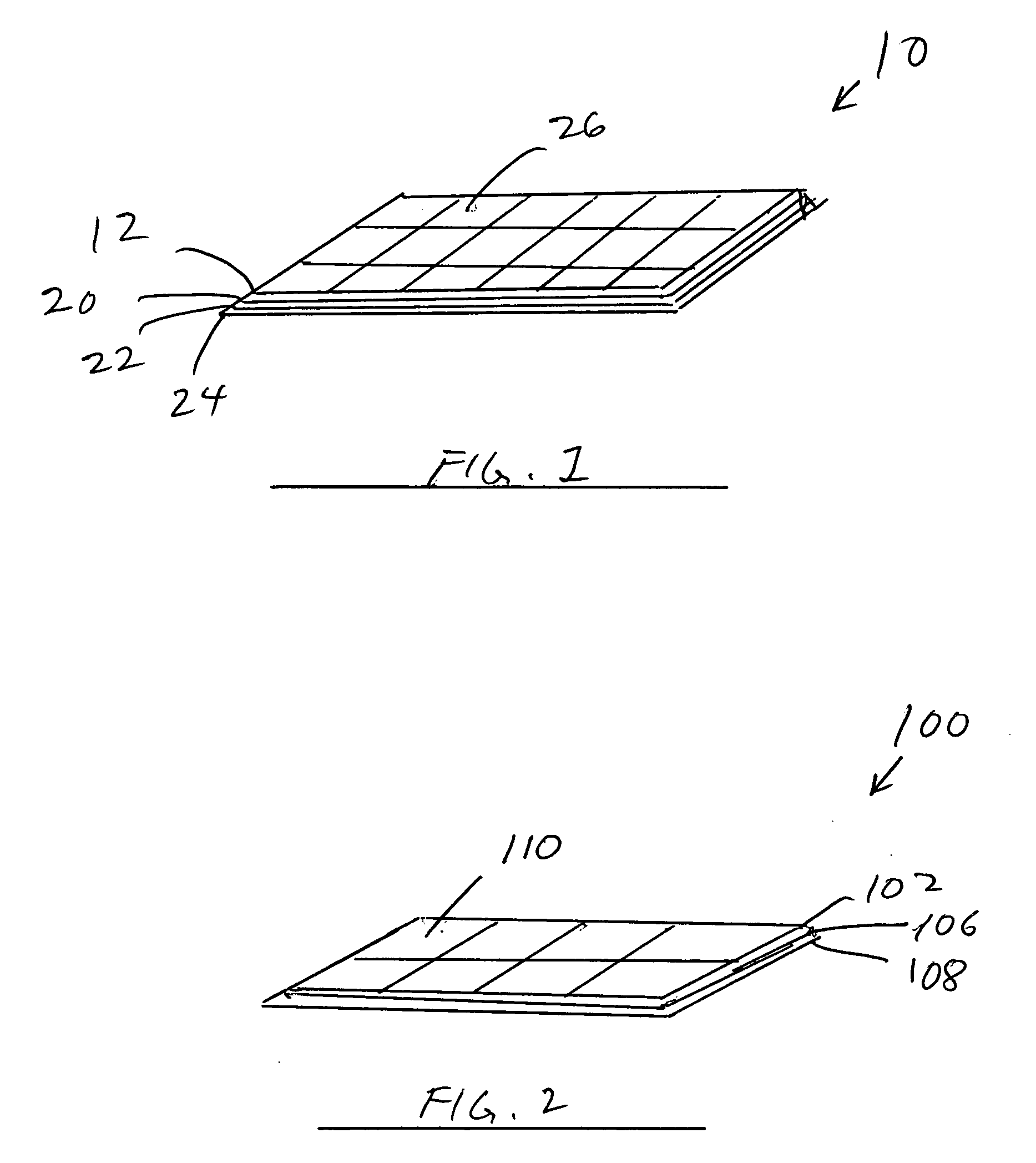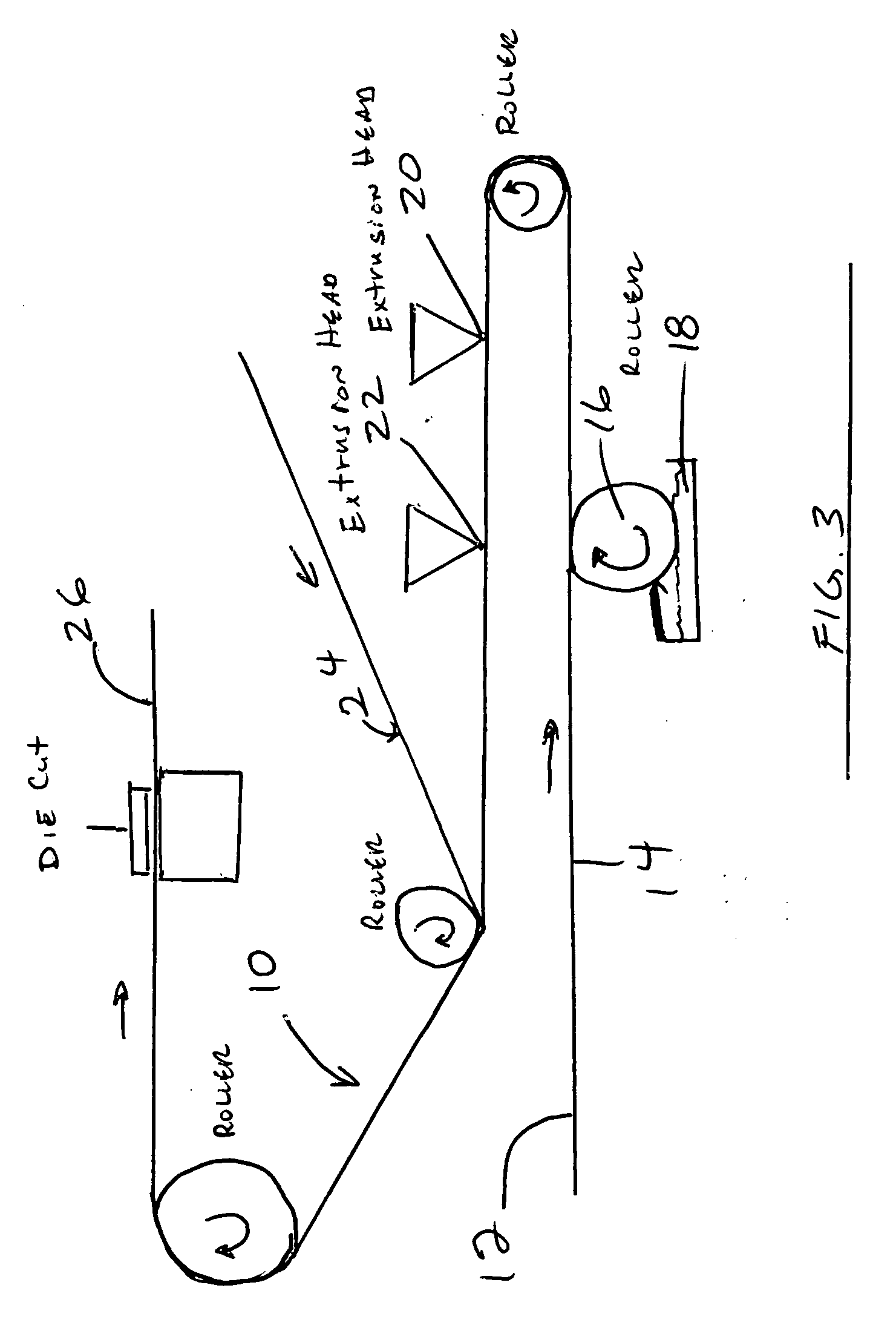Peelable laminate and process of making the same
a laminate and peeling technology, applied in the field of laminates and methods of forming the same, can solve the problems of lack of adequate security features in labels in the security field to prevent theft of goods, lack of clean cut cards provided after separation, and inability to provide acceptable products in the current art. , to achieve the effect of improving the use of labels
- Summary
- Abstract
- Description
- Claims
- Application Information
AI Technical Summary
Benefits of technology
Problems solved by technology
Method used
Image
Examples
Embodiment Construction
[0027] Referring to now to the drawings, a peelable laminate of the present invention is shown generally by the numeral 10 and 100. The peelable laminate 10, 100 is shown at the in FIGS. 1 and 2 before entering a convention printer and as it would be purchased by the user (after removal from its packaging (not shown)). The peelable laminate 10 includes a first pulp paper-based substrate 12 which can include a sheet of paper of 1 mil to 10 mil thicknesses, for example. In the forming process the sheet can be of a web roll type. The thickness of the sheet of paper is preferably between 1 and 3 mils for a label and 7-10 for business cards, for example. At least one side 14 of the substrate 12 is wet rolled by passing the substrate over an anilox roller 16 partially submersed in a water container 18 thereby treating the surface thereof in a manner cause the pulp fibers extending from side 14 to lie down to prevent undue adhesion to the same.
[0028] A polymer coating 20 applied to the tr...
PUM
| Property | Measurement | Unit |
|---|---|---|
| thicknesses | aaaaa | aaaaa |
| thickness | aaaaa | aaaaa |
| thickness | aaaaa | aaaaa |
Abstract
Description
Claims
Application Information
 Login to View More
Login to View More - R&D
- Intellectual Property
- Life Sciences
- Materials
- Tech Scout
- Unparalleled Data Quality
- Higher Quality Content
- 60% Fewer Hallucinations
Browse by: Latest US Patents, China's latest patents, Technical Efficacy Thesaurus, Application Domain, Technology Topic, Popular Technical Reports.
© 2025 PatSnap. All rights reserved.Legal|Privacy policy|Modern Slavery Act Transparency Statement|Sitemap|About US| Contact US: help@patsnap.com



